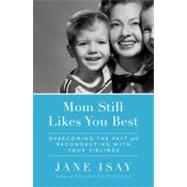
What is included with this book?
| Beginnings | |
| Just so Stories | p. 3 |
| The Circus Tent | p. 22 |
| Why Can't You Just Get Along? | p. 38 |
| Looking for Love in All The Right Places | p. 53 |
| Life's Course | |
| Gravity Shifts | p. 73 |
| When Difference Leads to Distance | p. 91 |
| Thick and Thin | p. 107 |
| Making Choices | |
| Trading Places | p. 129 |
| Message in a Bottle | p. 145 |
| Building Together | p. 161 |
| Acknowledgments | p. 177 |
| Table of Contents provided by Ingram. All Rights Reserved. |
The New copy of this book will include any supplemental materials advertised. Please check the title of the book to determine if it should include any access cards, study guides, lab manuals, CDs, etc.
The Used, Rental and eBook copies of this book are not guaranteed to include any supplemental materials. Typically, only the book itself is included. This is true even if the title states it includes any access cards, study guides, lab manuals, CDs, etc.